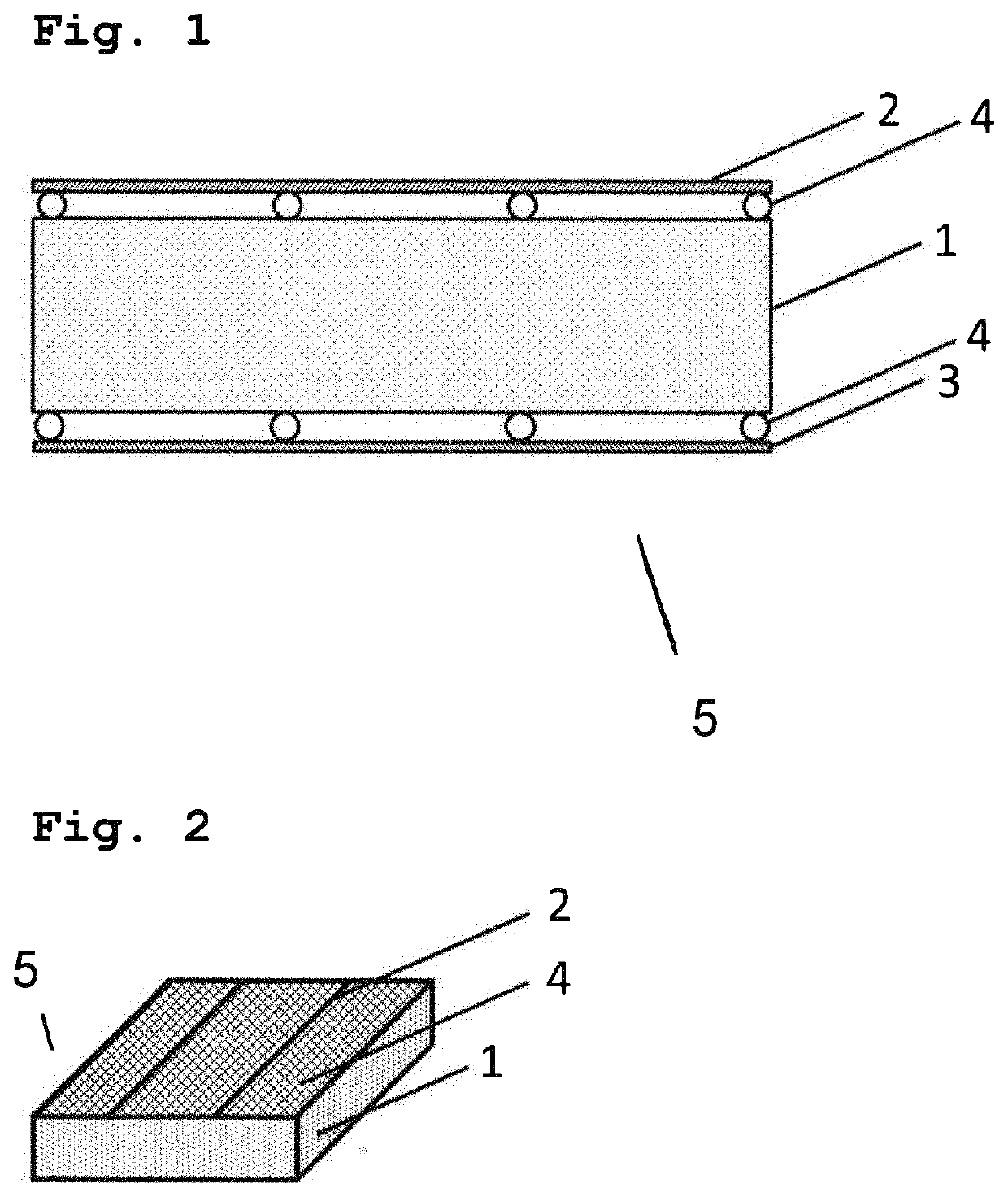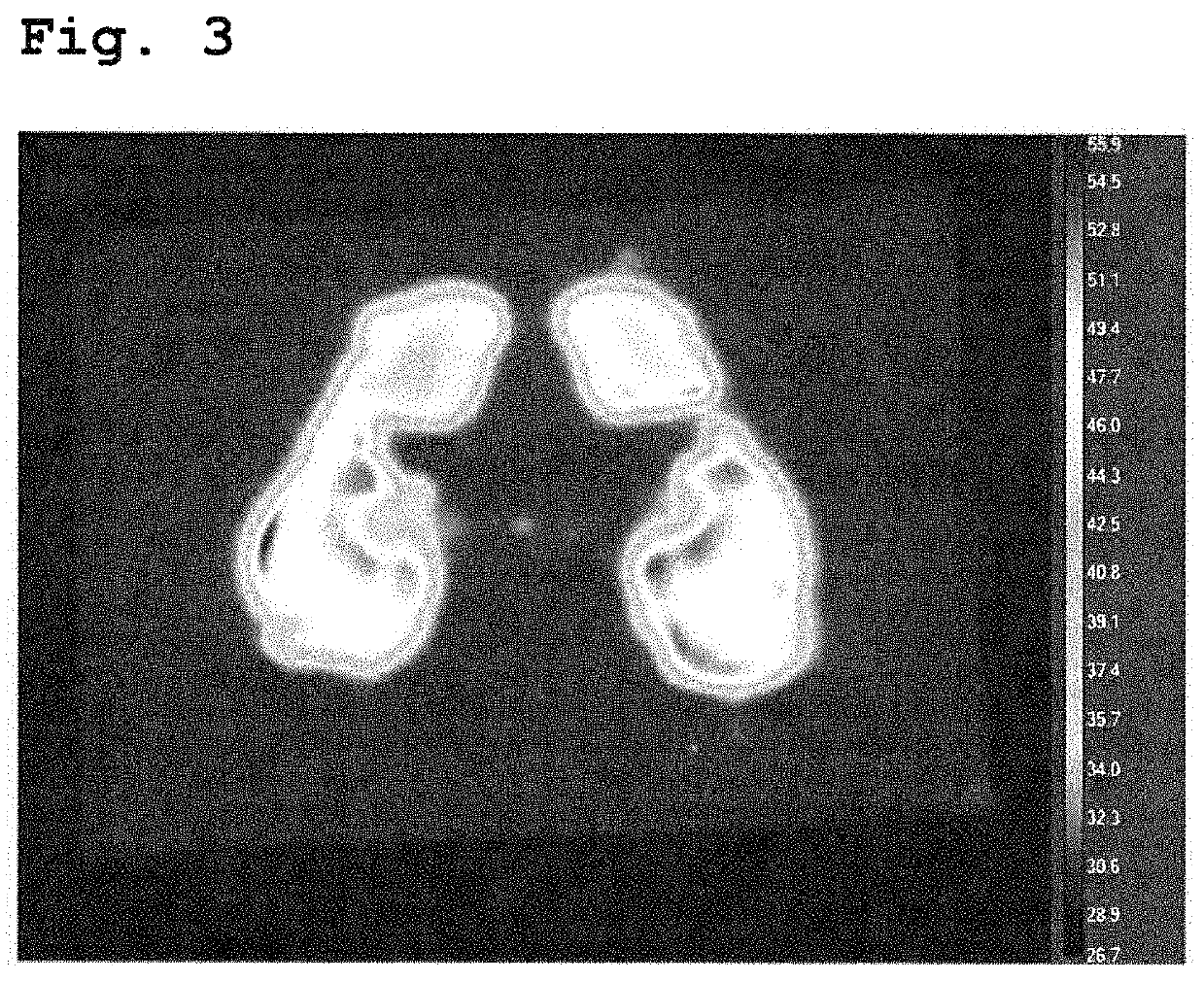Electric heating mat
a heating mat and electric technology, applied in the field of electric heating mats, can solve the problems of residual current flow, small quantity of permanent consumption of energy, multi-pressure sensors to be implemented, etc., and achieve the effect of reducing heat energy
- Summary
- Abstract
- Description
- Claims
- Application Information
AI Technical Summary
Benefits of technology
Problems solved by technology
Method used
Image
Examples
example 1
[0023]This example shows the principle of operation of the invention. A conductive PE foam (ELS-M) with dimensions of 470×320 mm and a thickness of 6 mm has gauze electrodes of stainless steel applied to both sides. The gauze electrodes consist of stainless steel wires with a mesh width of 1.4 mm, and are fastened loosely to the foam at the edge. PET plastic filaments with a diameter of 0.5 mm spaced about 6 cm apart are woven into the wire mesh as spacers between the lower gauze electrode and the conductive foam. 28 Foam platelets (2 mm thick) are glued about 8 cm apart from one another as spacers between the upper gauze electrode and the conductive foam. In principle, other materials and body shapes can be used as spacers, provided they do not prevent the wide-area contact between the electrodes and the conductive foam when loaded.
[0024]If a voltage of 60 V is applied to the electrodes, no measurable current flows through the heating mat in the unloaded case. If the mat is locally...
PUM
| Property | Measurement | Unit |
|---|---|---|
| electrical conductivity | aaaaa | aaaaa |
| electrical conductivity | aaaaa | aaaaa |
| electrical conductivity | aaaaa | aaaaa |
Abstract
Description
Claims
Application Information
 Login to View More
Login to View More - R&D
- Intellectual Property
- Life Sciences
- Materials
- Tech Scout
- Unparalleled Data Quality
- Higher Quality Content
- 60% Fewer Hallucinations
Browse by: Latest US Patents, China's latest patents, Technical Efficacy Thesaurus, Application Domain, Technology Topic, Popular Technical Reports.
© 2025 PatSnap. All rights reserved.Legal|Privacy policy|Modern Slavery Act Transparency Statement|Sitemap|About US| Contact US: help@patsnap.com


